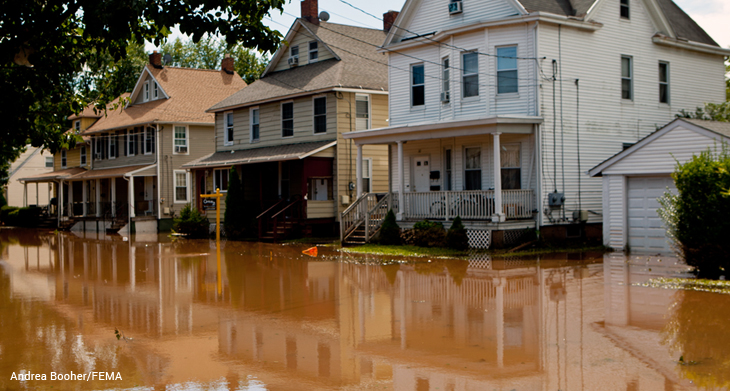
New Jersey Implements Innovative Measures to Combat Flooding
Introduction
As climate change intensifies, coastal states like New Jersey are experiencing frequent and severe flooding, threatening homes, infrastructure, and ecosystems. To address these challenges, New Jersey has adopted forward-thinking strategies, including property buyouts and infrastructure enhancements. These measures aim to reduce flood risks and safeguard communities, offering a model for other regions facing similar challenges.
The Rising Threat of Flooding in New Jersey
New Jersey, with over 1,700 miles of coastline, is particularly vulnerable to sea-level rise and storm surges. Recent years have seen a surge in flooding events, with Superstorm Sandy in 2012 serving as a stark reminder of the devastation that climate change can unleash. According to the Union of Concerned Scientists, sea levels along the New Jersey coast are projected to rise by 1.5 to 2.5 feet by 2050, exacerbating flooding risks in both coastal and inland areas.
Key Impacts of Flooding:
- Property Damage: Homes and businesses face destruction, leading to significant financial losses.
- Infrastructure Stress: Roads, bridges, and utilities are increasingly strained, requiring costly repairs.
- Environmental Degradation: Wetlands and other natural habitats are eroded, reducing biodiversity.
Innovative Solutions Adopted by New Jersey
Recognizing the urgency of the issue, New Jersey has implemented a multi-faceted approach to combat flooding. These initiatives combine strategic land use planning, community involvement, and cutting-edge technology to create long-term resilience.
1. Property Buyouts
New Jersey’s Blue Acres Program focuses on purchasing flood-prone properties and converting them into open spaces that act as natural buffers against rising waters. This voluntary initiative allows homeowners to relocate to safer areas while reducing future disaster costs.
How It Works:
- The state identifies properties in high-risk flood zones.
- Homeowners are offered fair market value for their properties.
- Purchased land is converted into parks, wetlands, or flood storage areas.
Since its inception, the program has acquired over 1,000 properties, reducing the burden on emergency services and minimizing damage during storms.
External Link: Learn more about the Blue Acres Program.
2. Flood Barriers and Infrastructure Projects
New Jersey is investing in physical infrastructure to protect critical areas from flooding. These projects include:
- Seawalls and Dikes: Reinforcing coastlines with barriers to prevent storm surges.
- Flood Gates: Controlling water flow during heavy rains.
- Green Infrastructure: Installing permeable pavements and rain gardens to manage stormwater naturally.
One standout project is the Rebuild by Design Meadowlands initiative, which integrates natural and man-made systems to protect communities in northern New Jersey.
External Link: Explore the Rebuild by Design initiative.
3. Community Education and Engagement
Public awareness is essential for the success of any flood mitigation strategy. New Jersey has launched campaigns to educate residents about flood risks and preparedness. These initiatives encourage homeowners to:
- Elevate homes in flood-prone areas.
- Purchase flood insurance.
- Participate in community resilience planning.
Challenges and Opportunities
While New Jersey’s efforts are commendable, they are not without challenges:
Challenges:
- Funding Constraints: Large-scale infrastructure projects require substantial investment.
- Community Resistance: Some residents are hesitant to relocate under the buyout program.
- Climate Uncertainty: The speed and extent of climate change make long-term planning complex.
Opportunities:
- Federal Support: Programs like FEMA’s Hazard Mitigation Grant can supplement state efforts.
- Innovation: Advancements in climate modeling and engineering can enhance project efficiency.
- Replication: Other states can adopt similar strategies, amplifying the impact nationwide.
New Jersey’s Role as a National Leader
New Jersey’s proactive measures have positioned it as a national leader in climate resilience. By combining science, policy, and community action, the state is setting a precedent for how to address flooding in the era of climate change.
Several states, including New York and Louisiana, are studying New Jersey’s model to implement similar programs in their flood-prone regions.
Conclusion
New Jersey’s innovative strategies to combat flooding—ranging from property buyouts to green infrastructure—demonstrate a commitment to safeguarding its communities against climate change. While challenges remain, these efforts provide a blueprint for other states to follow. As the climate crisis unfolds, collaborative and forward-thinking approaches like these will be critical for ensuring long-term resilience.
For further reading, explore initiatives like the National Flood Insurance Program or the Climate Adaptation Science Centers.
FAQs
1. What is the Blue Acres Program?
The Blue Acres Program is a New Jersey initiative that buys flood-prone properties from homeowners and converts the land into open spaces for flood management.
2. Why is New Jersey at high risk of flooding?
New Jersey’s extensive coastline and rising sea levels make it particularly vulnerable to flooding and storm surges.
3. How does green infrastructure help combat flooding?
Green infrastructure, like rain gardens and permeable pavements, manages stormwater naturally, reducing runoff and flooding risks.
4. Are property buyouts mandatory under the Blue Acres Program?
No, the program is entirely voluntary, allowing homeowners to choose whether to sell their properties.
5. What is the role of FEMA in New Jersey’s flood management efforts?
FEMA provides funding and technical support for flood mitigation projects in New Jersey.
6. How can homeowners prepare for flooding?
Homeowners can elevate their homes, purchase flood insurance, and stay informed about local flood risks.
7. What is the Rebuild by Design initiative?
Rebuild by Design is a project that integrates natural and engineered solutions to protect flood-prone areas in New Jersey.
8. How does climate change affect flooding in New Jersey?
Climate change leads to rising sea levels and more intense storms, increasing the frequency and severity of flooding events.
9. What are flood gates, and how do they work?
Flood gates control water flow during heavy rains, preventing water from inundating low-lying areas.
10. Can other states adopt New Jersey’s flood mitigation strategies?
Yes, New Jersey’s initiatives serve as a model for other states looking to combat flooding effectively.


